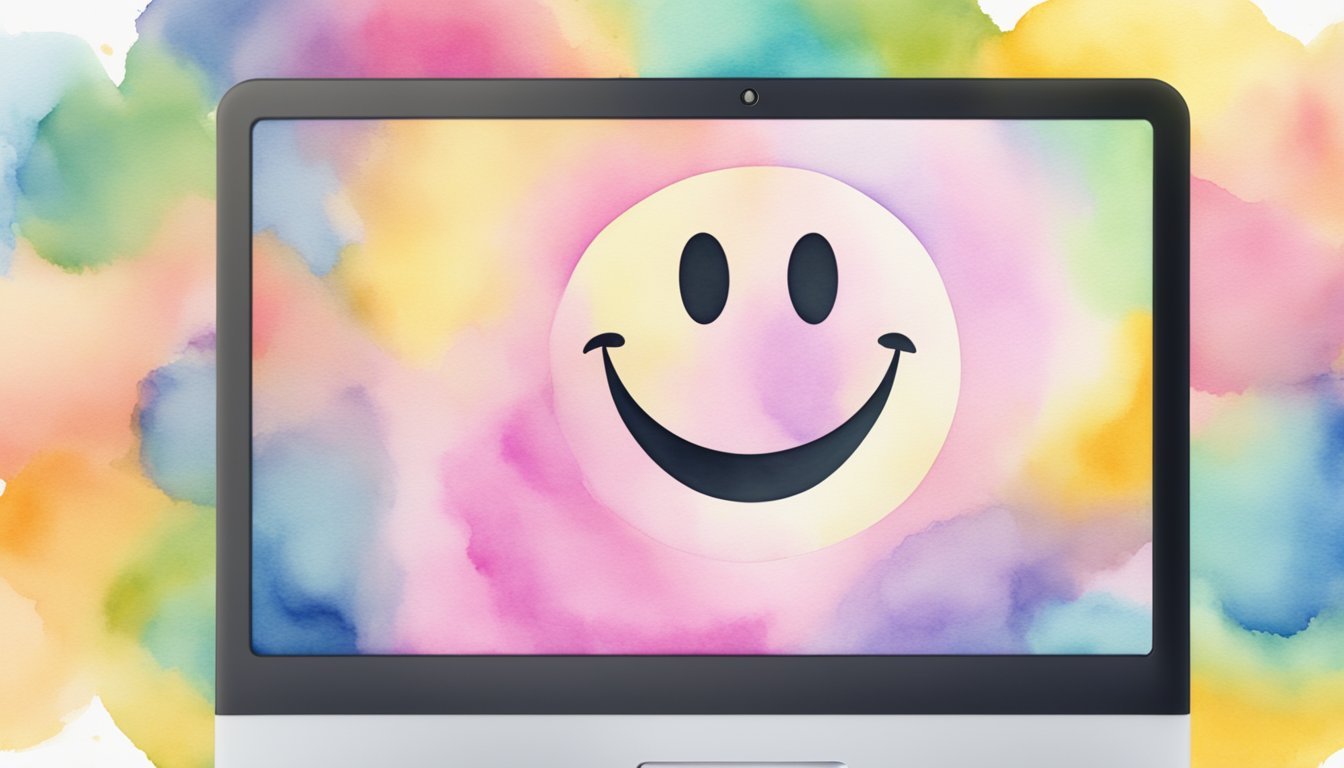History and Evolution of Smiley Faces
The smiley face has transformed from a simple design to a complex language in digital communication, embodying happiness and positivity. It has undergone significant changes since its conception, evolving from a graphic icon to a widespread emotional expression in the digital world.
Origins of the Smiley Symbol
The smiley symbol, known today for representing a stylized human smiling face, began its journey in 1963. A graphic designer named Harvey Ball was commissioned by the State Mutual Life Assurance Company to create an image to raise employee morale. His creation was a yellow circle with two black dots for eyes and an upturned, curved mouth, representing a cheerful smiley face. This design swiftly became a popular cultural trend.
From Text to Emoji
In digital communication, the smiley symbol transitioned from textual representations, such as the colon and parenthesis combination “:-)”, known as emoticons, to more visually sophisticated graphic images. With technology advancement, the smiley face evolved into its emoji form, allowing for a vast range of expressions beyond the traditional happy face. These included variations to convey nuanced emotions such as 😊 for a smiling face with smiling eyes or 😁 for a beaming face with smiling eyes.
Unicode Implementation
The integration of smiley faces into Unicode set a standardized platform for emojis to be used across different devices and platforms. Launched in 1993, Unicode 1.1 saw the inclusion of emojis, providing a universal encoding system. The Unicode Consortium continues to adopt new emojis, including various smiley faces, increasing the lexicon of digital communication. The white smiling face and black smiling face provided a baseline for the diversity in expression that Unicode now embodies. Today, smiley faces like 😄 and 😇 symbolize a broad spectrum of sentiments and ideas.
Usage and Significance

Smiley faces are a universal symbol representing emotions such as happiness, love, and contentment. They range from simple text symbols like 🙂 to a variety of emoji icons, including the widely recognized smiling face emoji 😊. Initially added to the Unicode Consortium, these icons have found their place at the top of the emoji hierarchy, often included in the top 100 used emojis.
In digital communication, the smiley face serves as a crucial tool to convey feelings that might otherwise be hard to interpret through text. They add a layer of emotional depth, transforming plain words into a message with sentiment. For instance, a simple period at the end of a message might seem curt, while adding a smiley face can change the tone to friendly and relaxed.
Smiley faces have evolved beyond simple text symbols. With each next project in software and application development, a variety of smiley emojis have been added to libraries, making them easy to copy and paste into messages. Users no longer have to remember character combinations; instead, they can conveniently select emojis from a list. The smile emoji—a classic yellow face with rosy cheeks—conjures the feeling of being elated. Emojis like the white frowning face express the opposite sentiments, giving users the ability to communicate a more comprehensive range of emotions.
The smiley symbol spans across cultures and languages, proving its versatile nature. Emoji such as the “face with tears of joy” 😂, signify laughter and humor, and have been hailed as one of the most popular in various studies. The smiling face emoji has a similar usage, typically indicating joy or approval. Some emojis serve specific ritual purposes, like the folded hands emoji 🙏, which can denote thanks, prayer, or a plea.
For further insight into the diverse meanings of various smiley emojis, visit Meanings of Emoji Faces and Smiley Symbols.

